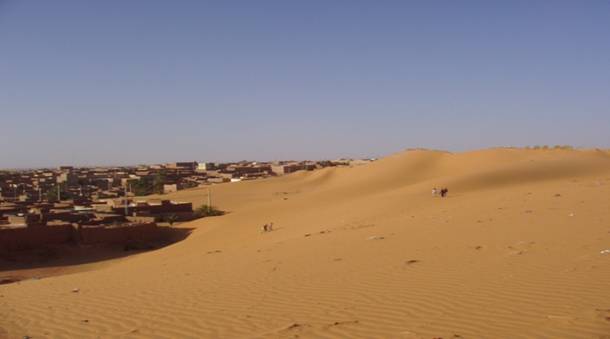The communities which live in deserts or in neighborhoods live in perfect harmony with nature and maintain traditions and single knowledge, these receipts are jeopardized by economic pressures and increasing environmental problems due to drought, desertification and climate change.
Though, it is obvious, that if men are obliged to give up their culture to survive or adopt a new mode of life, a world patrimony of a priceless value will be lost.
The alive example is the one of the oasis ecosystem where the oasis agriculture which is considered as a cultural heritage in Algeria, even in all the Maghreb knows environmental requirements linked mainly to the blocking with sand which compromises in the long term the durability of these ecological entities of human but ingenious conception (ancestral knowledge in: water management, the ground, the local bio-resources and the built).
In these areas, the most important threat is the silting up (extreme stage of the desertification). He threatens, the towns, Ksours, farmlands, palm groves, roads….

So, we attend a threat of preservation of the natural, historical and cultural sites such as: ksour, of a big patrimonial wealth, is also threatened by the blocking with sand, Saoura, Gourara, Touat and Tidikelt in the southwest of Algeria. Ksar de Taghit is considered as a famous historic and tourist site of rupestral engravings).
Their conception allows to emphasize indigenous knowledge, exploited could establish an experience to ease and better manage the impacts of the global warming.
Recapitulation on the process drought / desertification and climate changes:
Having reviewed, all the triggering factors and partial consequences which ensue from it we cannot omit to make the synthesis of the various interactions amplifying the impacts of the risks object of the BE SAFE NET, through the plan illustrating the enchainment and the interdependence of the risks in the deeply moving consequences of the systems of production and socioeconomic organization. As an example, the droughts which raged in 1972/73 in Sahel forced the breeders to settle and the farmers to reduce their food-producing plots of land. The consequences were heavy and amounted to 200 000 deaths for only year of 1973.